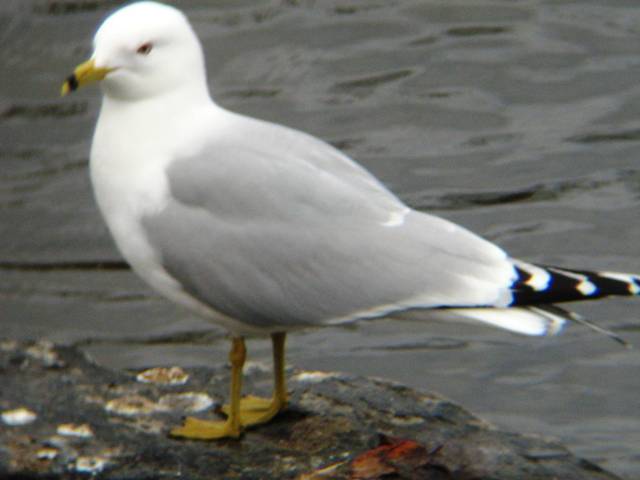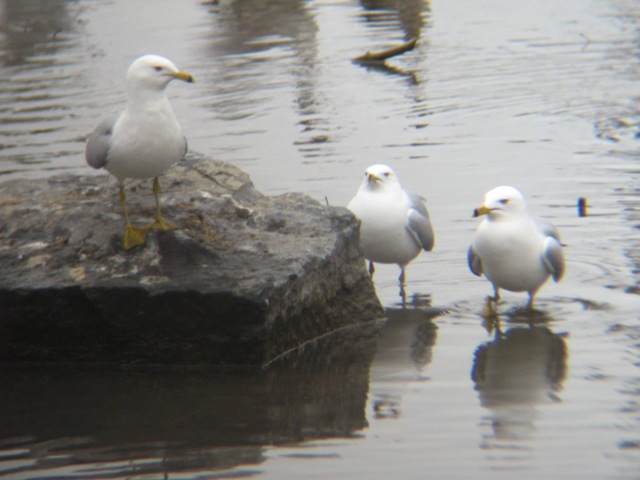Ring-billed Gull

Family: Alcidae
Scientific Name: Larus delawarensis
Description: Smaller than herring gull, with yellow legs and black ring near the tip of the bill. Total length is around 46-51cm.
Distribution: Although this bird nests locally in Atlantic Canada, it wanders almost everywhere and has picked up many of the bad habits associated with its larger relatives. They occupy southern during their breeding season and the lower during winter.
Habitat: During the breeding season it is found on sparsely vegetated islands, open beaches, breakwaters and dredge-spoil areas. In migration and winter they are found in lakes, rivers, landfills, golf course, fields, parks and garbage dumps.
Nesting: Ring-billed gulls are colonial birds that lay their blotched, grey to olive eggs (2-4) in a shallow scrape on the ground lined with plants, debris, grass and sticks. Both parents incubate the eggs.
Diet: Opportunistic feeder that eats garbage, spiders, insects, rodents, earthworms and grubs. It will also scavenge for carrion and consume aquatic invertebrates.
Relation to man: Sometimes considered pests as they occupy parks, beaches, golf courses and fast-food restaurant parking lots looking for food handouts.
Images
 |
 |
 |
|